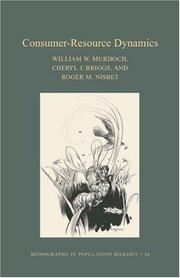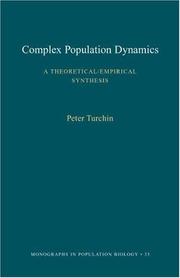| Listing 1 - 10 of 3497 | << page >> |
Sort by
|
Book
ISSN: 00706728 ISBN: 3443642934 9783443642938 Year: 2003 Publisher: Berlin J. Cramer in der Gebrüder Borntraeger VerlagsBuchhandlung
Abstract | Keywords | Export | Availability | Bookmark
 Loading...
Loading...Choose an application
- Reference Manager
- EndNote
- RefWorks (Direct export to RefWorks)
Book
ISBN: 0856640670 9780856640674 Year: 1976 Publisher: LONDON: Croom Helm,
Abstract | Keywords | Export | Availability | Bookmark
 Loading...
Loading...Choose an application
- Reference Manager
- EndNote
- RefWorks (Direct export to RefWorks)
Book
ISBN: 0135280435 Year: 1985 Publisher: Englewood Cliffs (N.J.) : Prentice-Hall,
Abstract | Keywords | Export | Availability | Bookmark
 Loading...
Loading...Choose an application
- Reference Manager
- EndNote
- RefWorks (Direct export to RefWorks)
Book
ISBN: 0854034242 9780854034246 Year: 1990 Publisher: London Royal society
Abstract | Keywords | Export | Availability | Bookmark
 Loading...
Loading...Choose an application
- Reference Manager
- EndNote
- RefWorks (Direct export to RefWorks)
Population biology --- Congresses --- Population biology - Congresses

ISBN: 069100658X 0691006571 1400847257 1299051464 9781400847259 9780691006581 9780691006574 Year: 2013 Volume: 36 Publisher: Princeton, NJ
Abstract | Keywords | Export | Availability | Bookmark
 Loading...
Loading...Choose an application
- Reference Manager
- EndNote
- RefWorks (Direct export to RefWorks)
Despite often violent fluctuations in nature, species extinction is rare. California red scale, a potentially devastating pest of citrus, has been suppressed for fifty years in California to extremely low yet stable densities by its controlling parasitoid. Some larch budmoth populations undergo extreme cycles; others never cycle. In Consumer-Resource Dynamics, William Murdoch, Cherie Briggs, and Roger Nisbet use these and numerous other biological examples to lay the groundwork for a unifying theory applicable to predator-prey, parasitoid-host, and other consumer-resource interactions. Throughout, the focus is on how the properties of real organisms affect population dynamics. The core of the book synthesizes and extends the authors' own models involving insect parasitoids and their hosts, and explores in depth how consumer species compete for a dynamic resource. The emerging general consumer-resource theory accounts for how consumers respond to differences among individuals in the resource population. From here the authors move to other models of consumer-resource dynamics and population dynamics in general. Consideration of empirical examples, key concepts, and a necessary review of simple models is followed by examination of spatial processes affecting dynamics, and of implications for biological control of pest organisms. The book establishes the coherence and broad applicability of consumer-resource theory and connects it to single-species dynamics. It closes by stressing the theory's value as a hierarchy of models that allows both generality and testability in the field.

ISBN: 1400847281 1299133266 9781400847280 0691090211 9780691090214 0691090203 0691090211 9780691090214 9780691090207 0691090203 Year: 2013 Volume: 35 Publisher: Princeton, NJ
Abstract | Keywords | Export | Availability | Bookmark
 Loading...
Loading...Choose an application
- Reference Manager
- EndNote
- RefWorks (Direct export to RefWorks)
Why do organisms become extremely abundant one year and then seem to disappear a few years later? Why do population outbreaks in particular species happen more or less regularly in certain locations, but only irregularly (or never at all) in other locations? Complex population dynamics have fascinated biologists for decades. By bringing together mathematical models, statistical analyses, and field experiments, this book offers a comprehensive new synthesis of the theory of population oscillations. Peter Turchin first reviews the conceptual tools that ecologists use to investigate population oscillations, introducing population modeling and the statistical analysis of time series data. He then provides an in-depth discussion of several case studies--including the larch budmoth, southern pine beetle, red grouse, voles and lemmings, snowshoe hare, and ungulates--to develop a new analysis of the mechanisms that drive population oscillations in nature. Through such work, the author argues, ecologists can develop general laws of population dynamics that will help turn ecology into a truly quantitative and predictive science. Complex Population Dynamics integrates theoretical and empirical studies into a major new synthesis of current knowledge about population dynamics. It is also a pioneering work that sets the course for ecology's future as a predictive science.
Population biology. --- Biology --- Ecology
Book
Year: 1975 Publisher: Jena : Fischer,
Abstract | Keywords | Export | Availability | Bookmark
 Loading...
Loading...Choose an application
- Reference Manager
- EndNote
- RefWorks (Direct export to RefWorks)
Book
Abstract | Keywords | Export | Availability | Bookmark
 Loading...
Loading...Choose an application
- Reference Manager
- EndNote
- RefWorks (Direct export to RefWorks)
Book
Year: 1977 Publisher: Jena : Fischer,
Abstract | Keywords | Export | Availability | Bookmark
 Loading...
Loading...Choose an application
- Reference Manager
- EndNote
- RefWorks (Direct export to RefWorks)
Book
ISBN: 0231052529 Year: 1983 Publisher: New York (N.Y.) : Columbia university press,
Abstract | Keywords | Export | Availability | Bookmark
 Loading...
Loading...Choose an application
- Reference Manager
- EndNote
- RefWorks (Direct export to RefWorks)
| Listing 1 - 10 of 3497 | << page >> |
Sort by
|

 Search
Search Feedback
Feedback About UniCat
About UniCat  Help
Help News
News